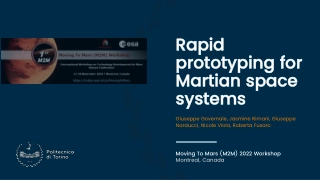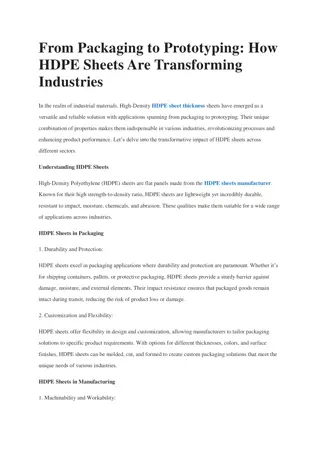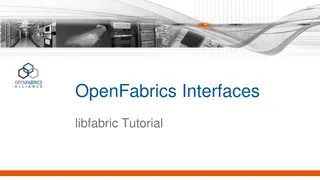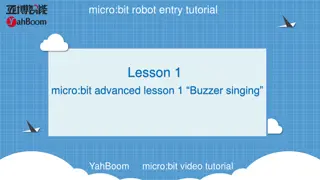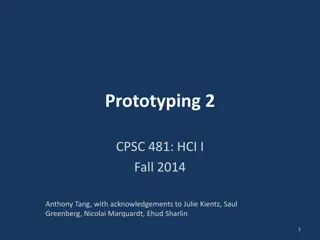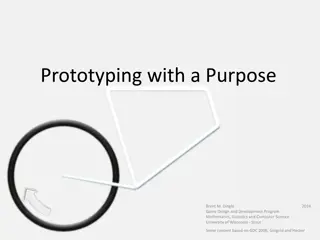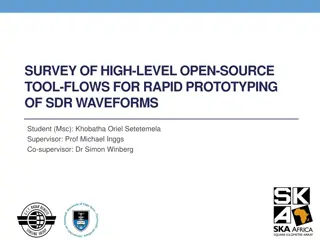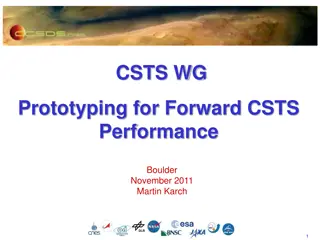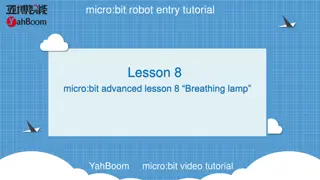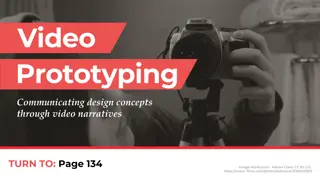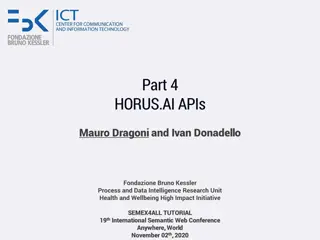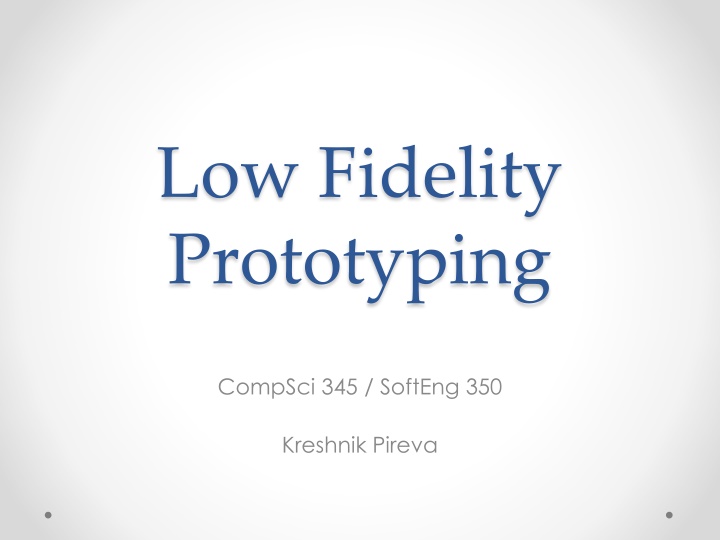
Low Fidelity Prototyping for Efficient User Experience Design
Explore the concept of low-fidelity prototyping in computer science and software engineering, focusing on its benefits, techniques, and application in real-world scenarios. Learn how to create low-fi prototypes using simple tools like pen, paper, and colored pencils. Understand the importance of prototyping in experimenting with alternatives, receiving quick feedback, and saving costs in the development process. Dive into a practical example of automating ordering for a fast-food restaurant, addressing common issues like verbal communication errors and language barriers. Discover the requirements for designing a user-friendly system that accommodates untrained users and emphasizes fast order processing. Join group activities to practice making low-fi prototypes and sharing and critiquing solutions.
Download Presentation

Please find below an Image/Link to download the presentation.
The content on the website is provided AS IS for your information and personal use only. It may not be sold, licensed, or shared on other websites without obtaining consent from the author. If you encounter any issues during the download, it is possible that the publisher has removed the file from their server.
You are allowed to download the files provided on this website for personal or commercial use, subject to the condition that they are used lawfully. All files are the property of their respective owners.
The content on the website is provided AS IS for your information and personal use only. It may not be sold, licensed, or shared on other websites without obtaining consent from the author.
E N D
Presentation Transcript
Low Fidelity Prototyping CompSci 345 / SoftEng 350 Kreshnik Pireva
How to make a low-fi prototype Pen, paper, coloured pencils, scissors, cellotape .. Just like primary school Phone interface for airline booking 2
How to make a low-fi prototype Wizard of Oz/Cognitive walkthrough with paper prototype https://www.youtube.com/watch?v=GrV2S ZuRPv0
Why Prototype Experiment with alternatives Quick feedback Fix interface problems early on Saves money Low Fidelity Quick diagrams showing basic layout and flow High Fidelity Looks and works more like final product but with reduced functionality
Plan for Today Make a low-fi prototype (in groups of 4) Keeping constraints in view Share and critique our solutions
Problem Statement Customer is a fast-food restaurant, facing following problems while getting orders: o Verbal communication is prone to errors (especially in busy hours) o Language barriers o Customized orders have to be memorized and are often miscommunicated Wants to automate ordering Adapted From: School of Information Management and Systems, University of California, Berkley
Requirements Accommodate users with no training Speed in placing order is extremely important System should help in swift order processing and delivery The visual appeal of the food menu is also very important!

